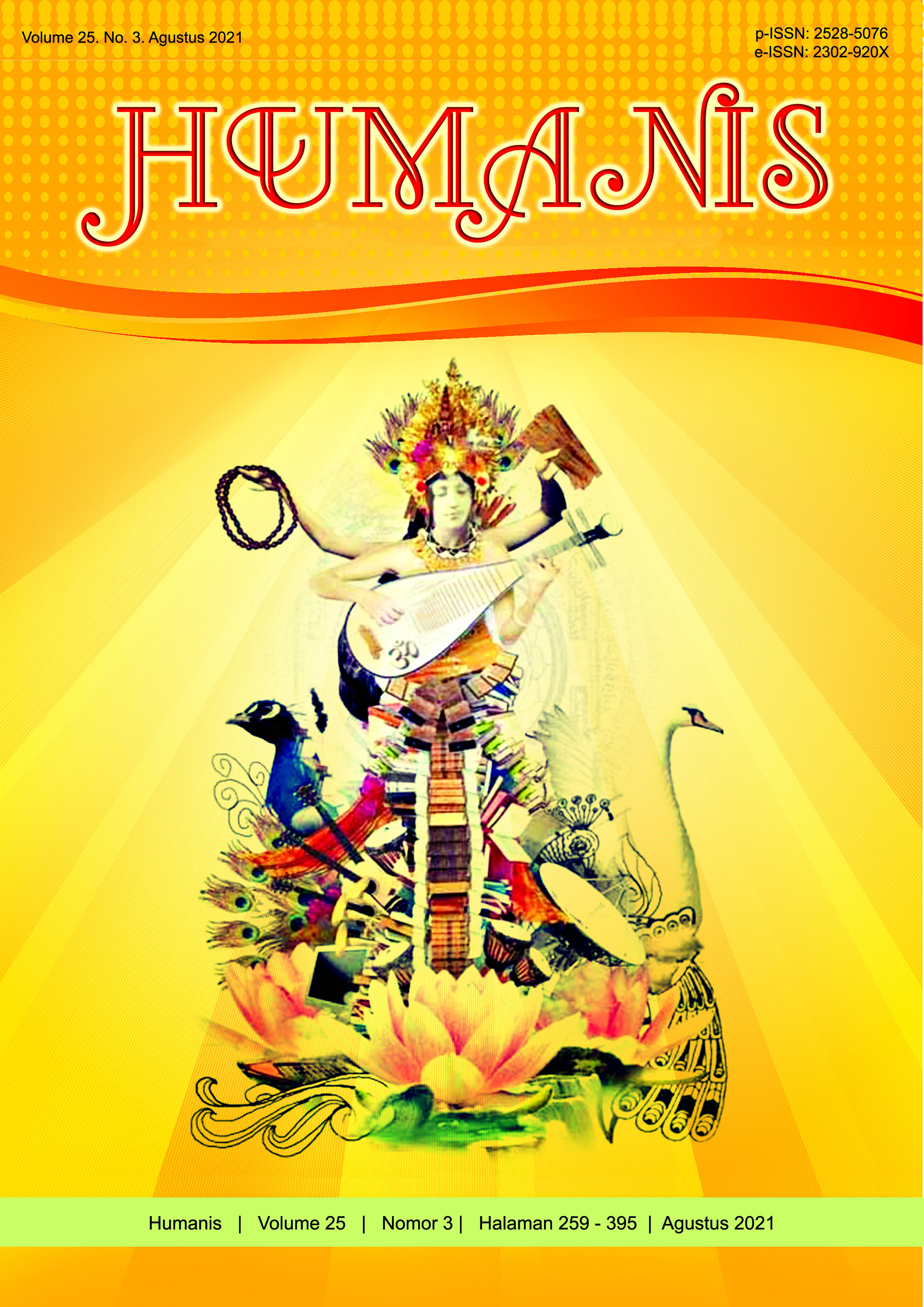Women’s Language Features in Emily in Paris: A Sociolinguistics Study
Abstract
This undergraduate thesis discusses the usage of women’s language features in the television series Emily in Paris. The study analyzes the features of women’s language and its functions in the television series. This study uses observation method in collecting the data. The data were taken from Emily in Paris television series and the movie scripts. Descriptive qualitative method is used to analyze the data by applying women’s language features theory by Lakoff. Based on the analysis and data taken, there are 480 utterance of women’s language features found and ten features of women’s language used by the female characters in Emily in Paris. Lexical hedges or fillers is the most used feature and precise color terms is the least used feature.
Downloads
References
Brown, P., & Levinson, S. C. (1987). Politeness: Some universals in language usage. Cambridge University Press.
Bryson, B. (1990). The Mother Tongue: English, and How it Got That Way. New York: William Morrow.
Cameron, D. (2003). Gender and Language Ideologies. In: Holmes, J. and Meyerhoff, M. (ed.) The Handbook of Language and Gender. Cornwall: Blakewell Publishing.
Coates, J. (2016). Women, men and language: A sociolinguistic account of gender differences in language (Third edition). Routledge.
DeFrank, M. and Kahlbaugh, P. (2018). Language Choice Matters: When Profanity Affects How People are Judged. Journal of Language and Social Psychology. Vol. 38, No.1, 1-16. Retrieved on 1st March 2021 from https://journals. sagepub.com/doi/10.1177/0261927X 18758143.
De Klerk, V. (1992). How taboo are taboo words for girls? Language in Society, Vol. 21, No. 2, 277–289. Retrieved on 5th March 2021 from https://www.researchgate.net/publication/29807278_How_Taboo_Are_Ta boo_Words_for_Girls
Eckert, P. and McConnell-Ginet, S. (2003). Language and Gender. New York: Cambridge University Press.
Hedenmalm, L. (2012). Language and Gender in Disney: A Study of Male and Female Language in Walt Disney Movies (undergraduate thesis). Luleå University of Technology.
Holmes, J. (1990). Hedges and boosters in women’s and men’s speech. Language & Communication. Vol. 10, No.3, 185–205.
Holmes, J. (2013). An introduction to sociolinguistics (4. ed). Routledge.
Holmes, J., & Meyerhoff, M. (Eds.). (2003). The handbook of language and gender. Blackwell.
Jespersen, O. (1922). Language: Its Nature, Development, and Origin. London: George Allen & Unwin.
Johnson, D. I., Lewis, N. (2010). Perceptions of Swearing in the Work Setting: An Expectancy Violations Theory Perspective. Communication Reports. Vol. 23, No. 2, 106-118. Retrieved on 7th March 2021 from https://www.tandfonline.com/doi/abs/10.1080/08934215.2010.511401
Lakoff, R. (1973). Language and Woman’s Place. Language in Society. Vol. 2, No. 1, 45–80.
Lakoff, R. (1975). Language and Woman's Place. London: Cambridge University Press.
Rubbyanti, M. A. (2017). Women’s Language in Sense and Sensibility BBC Miniseries: A Sociolinguistic Study. Sastra Inggris – Quill. Vol. 6, No. 1, 43-55. Yogyakarta State University. Retrieved on 7th November 2020 from http://journal.student.uny.ac.id/ojs/index.php/quill/article/view/6370.
Yin, R. K. (2011). Qualitative Research from Start to Finish. New York: The Guilford Press.
Talbot, M. (2003). Gender Stereotypes: Reproduction and Challenge. In: Holmes, J. and Meyerhoff, M. (ed.) The Handbook of Language and Gender. Cornwall: Blakewell Publishing.
Weatherall, A., Gallois, C. (2003). Gender and Identity: Representation and Social Action. In:Holmes, J. and Meyerhoff, M. (ed.) The Handbook of Language and Gender. Cornwall: Blakewell Publishing.


















